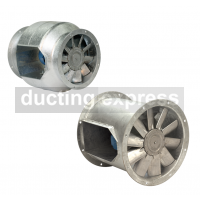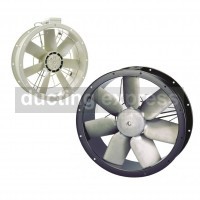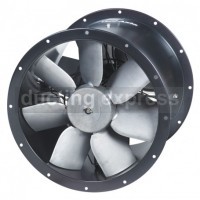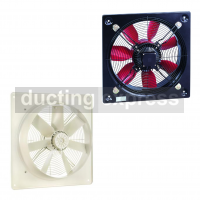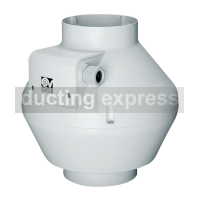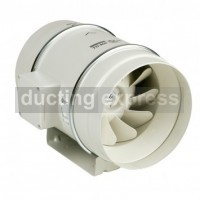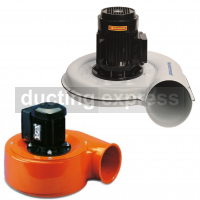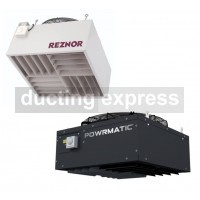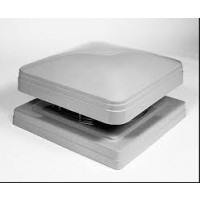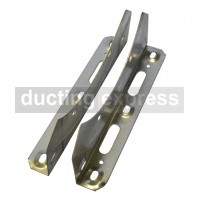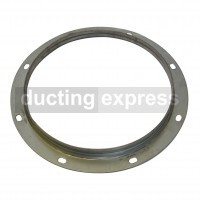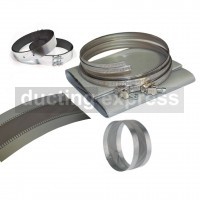Fans & Accessories
Types of Ducting Fans and Extractor Fan Ducting
The role of any ductwork is to transport airflow from point A to point B. The thing is that there won’t be any airflow if it was not for ducting fans to create it. Ducting fans are mostly mounted behind a vent or inline. Before we go into details, let’s summarise the types of ducting fans mostly used:
- Inline fans
- Roof-mounted units
- De-stratification fans
- Axial fans
Axial ducting fans on their own have a few different varieties:
- Belt-driven
- Bifurcated flow
- Case-mounted
- Contra-rotating
There is one more category. ATEX fans, those ducting fans are certified for use in environments with a high possibility of explosions.
Every type of ducting fan is suitable for different applications. For instance, the bifurcated flow fans are an ideal solution for when a high-temperature inline duct fan is needed. Those fans have a motor that is isolated from the air stream, making it suitable for continuous use. They can take temperatures as high as 150ºC. Belt-driven axial fans, on the other hand, may not be so resilient to heat but are far less noisy than their competitors, plus they can handle higher RPM.
Another interesting category is contra-rotating ducting fans. They are capable of generating higher pressure, assuring that fresh air can get into facilities that are underground. Largely used in mines.
On many inline fans for ducting, the duct pipe could be mounted straight to an extension on the fan via jubilee clip or even inside the duct pipe itself. They can be further categorised as “axial” and “centrifugal”. Those fans are widely used as industrial inline duct fans and in general. The motor rotating the inline ducting fans is located within the fan itself. They are suitable for tight spaces, because they don’t take up excessive space, plus they tend to perform well. Inline ducting fans are ideal for transporting airflow through long duct pipes.
The above-mentioned centrifugal fans are suitable for ceiling installations, in which they can blog fresh air downwards into a room, warehouse or production facility. There are three types of centrifugal fans determined by the type of fan blades:
- Forward inclined
- Backwards inclined
- Straight radial
The same centrifugal ducting fans are often used for extractor fans because they tend to provide more air suction force than axial fans.
Speaking of extraction fans, let’s get familiar with the popular choices for extractor fan ducting as well.
Extraction fan ducting types and perks
Ducting fans are used to provide fresh air in facilities and to extract fumes and dust. Generally, the pipes through which the air travels are called ductwork or ducting. However, that part of the ductwork that transport fumes and bad air outside the room (through air filters) is called extractor fan ducting. It has an extractor fan (also known as exhaust fan) connected to one of its ends that generates air suction and extracts bad quality air.
Just like with ducting fans, there are many types of extractor fan ducting. They are generally categorised by the material they are made out of.
- Metal
- Plastic
- Flexible
Different materials are used depending on the application. In commercial facilities the most used type of extractor fan ducting is metal. When the ducting is exposed to meteorological conditions, galvanized steel ducting is preferred, because it is resilient to corrosion. Corrosion itself can lead to punctures in the extractor fan ducting, which will lower its efficiency.
Plastic extraction fan ducting is used for systems that won’t need to handle high temperatures and will be protected by the force of nature. Plastic ducts are also cheaper, which makes them a preferred option in systems on the budget, that won’t need to handle high pressure.
Flexible extraction fan ducting is ideal for situations in which you need to relocate the air suction. A good example would be a welding workshop. Workers that weld on different locations will find the option of relocating the extractor fan ducting right next to the source of harmful fumes convenient.
There are plenty of alternatives on the market. Each has its pros and cons and is most efficient under given circumstances. You can always rely on the experienced advice from the people at Ducting Express. Contact them at 01455 616 444 and they will gladly help you out.
-

Speed Controllers & Starters
-

Direct Online Starters 3 Phase
-

Auto Shaker Controller
-
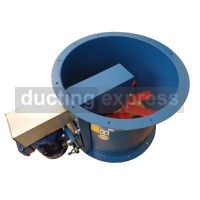
Belt Driven Axial Fans
-

Bifurcated Axial Flow Fans
-

Case Mounted Axial Fans
-

Contra Rotating Axial Fans
-

Plate Mounted Axial Fans
-

Inline Tube Fans
-

Inline Mixed Flow Fans
-

Fans For Flexible Arms
-

De-Stratification Fans
-

Roof Mounted Fan Units
-

Fan Floor Mounting Brackets
-

Mounting Flange
-

Fan Flexible Connectors
